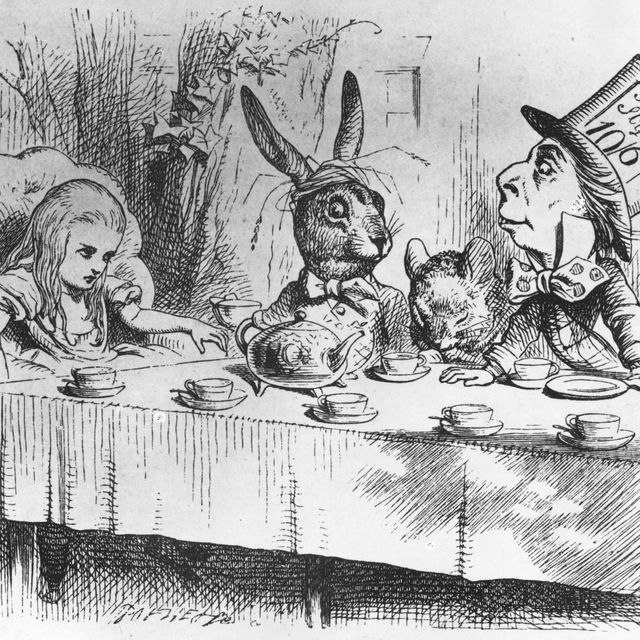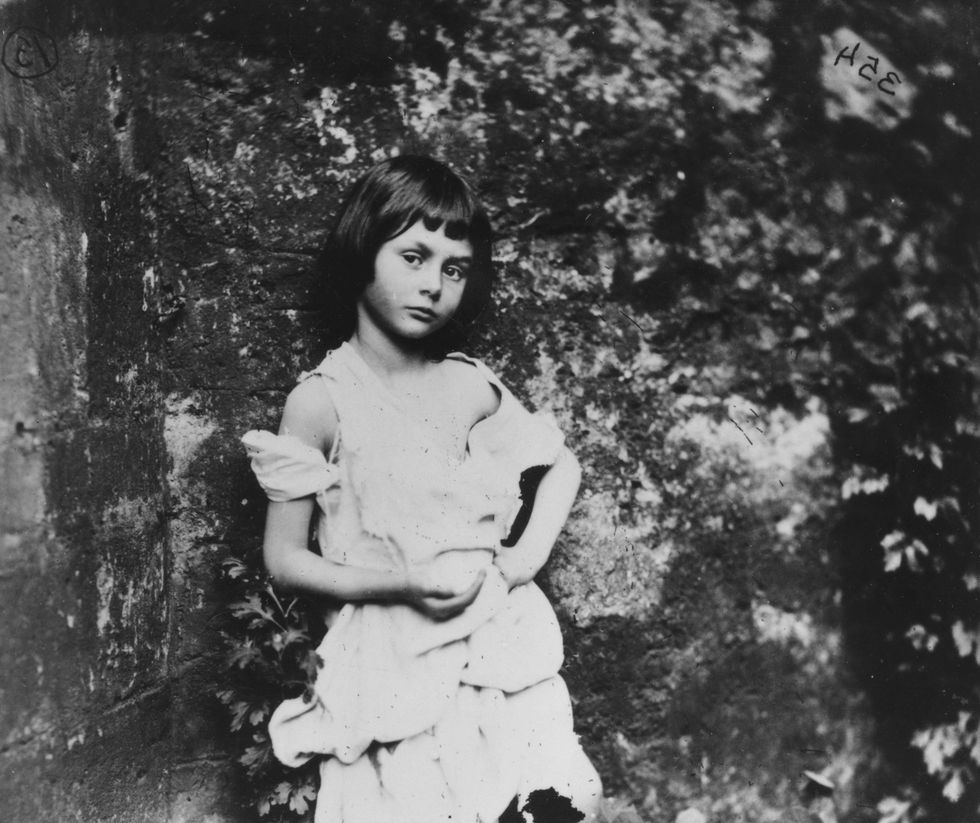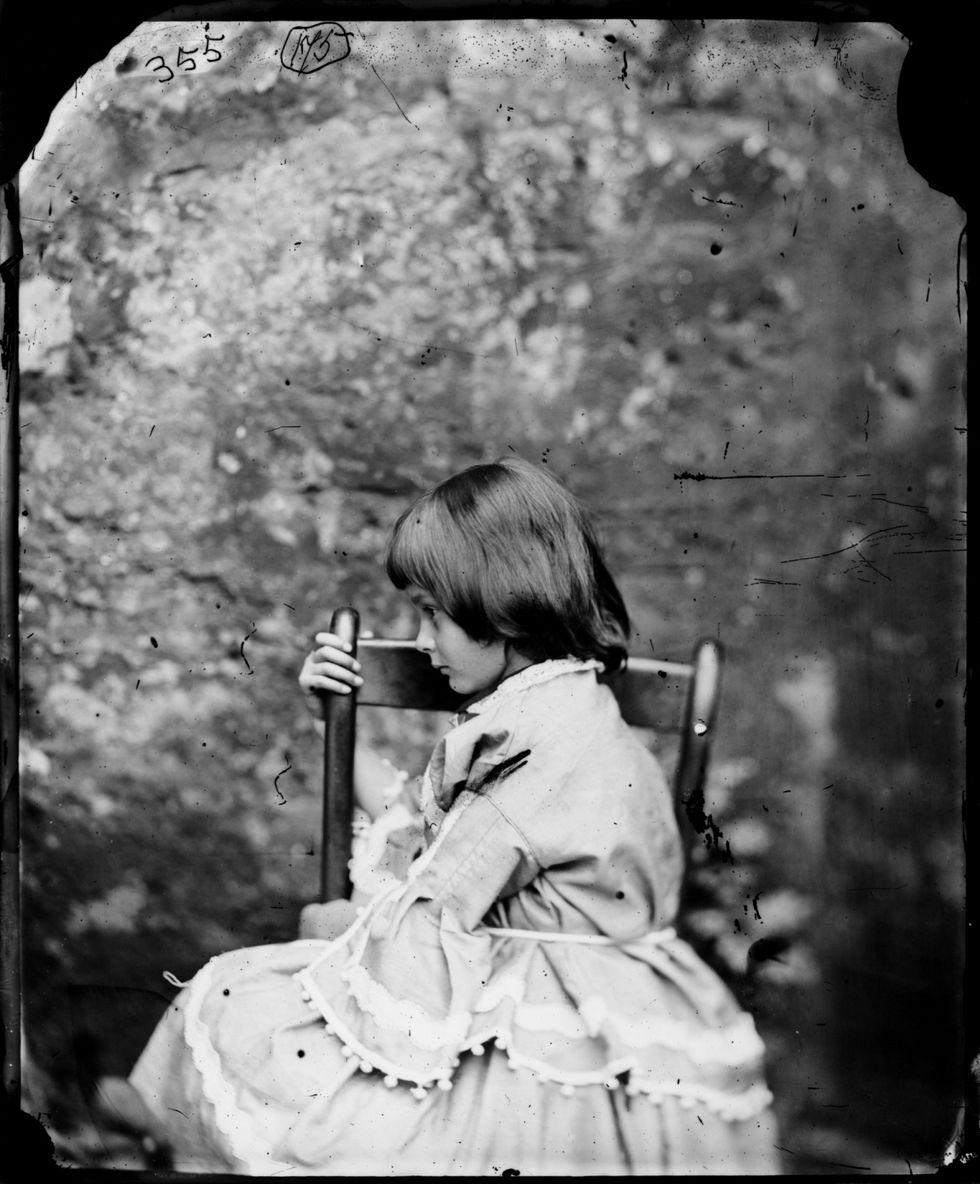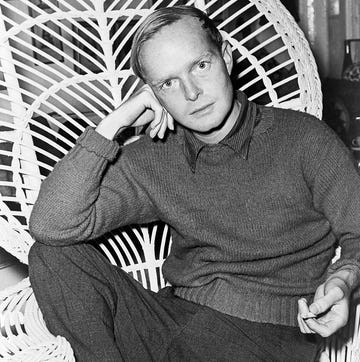“Who in the world am I?” Alice ponders in Lewis Carroll's Alice’s Adventures in Wonderland. "Ah, that’s the great puzzle." Outside the pages of the fantastical 1865 novel, however, the real-life Alice's identity is much less of a mystery.
While a young girl certainly never tumbled down a rabbit hole to a whimsical land of eccentric characters like a tea-party-hosting Mad Hatter, a perpetually late White Rabbit or a mischievously grinning Cheshire Cat, a dark-haired 10-year-old named Alice Liddell did inspire the iconic tale. In fact, Carroll (real name: Charles Lutwidge Dodgson) even once referred to Liddell as one “without whose infant patronage I might possibly never have written at all.”
Carroll met Alice when he was hired to photograph the Liddell family
Born on May 4, 1852, in Westminster, England, Liddell was the fourth of Henry and Lorina Liddell's 10 children. Her father, the Dean of Christ Church, first became acquainted with Carroll at the college where the author worked as a mathematics tutor. As Carroll noted in his diary, it was on April 25, 1856, that he first met the young Alice.
An avid photographer, Carroll was invited by Henry Liddell to snap photos of his family (of Alice in particular) and formed a close bond with the family. On July 4, 1862, Carroll and a friend took a then-10-year-old Alice, as well as her sisters Lorina and Edith, on a boat trip from Oxford to the nearby town of Godstow to have a tea party on the riverbank. It was on this day that the now-famous story was born.
While on the excursion, Carroll entertained the girls by making up a fantastical story about a young girl named Alice. The real-life Alice was so enamored by the tale, that she begged him to write down the story so that she could read it again and again.
Their encounters mysteriously stopped for a few years
His almost daily meetings with Alice and the other Liddell children came to a mysteriously abrupt halt the following summer, however. While the reason was likely explained in his diary, the page that may have contained the answer was cut out following his 1898 death. And so the cloud of mystery remains.
The Liddells finally made a reappearance in his diary in late 1864, and as a Christmas gift that year, he granted Alice's wish, giving her a handwritten and illustrated copy of what he had then called Alice’s Adventures Under Ground.
Meanwhile, the author continued to expand upon the story — almost doubling it in length — and published a novel the following year with a new title suggested by her father: Alice’s Adventures in Wonderland. But, as Alice got older, their friendship seemed to dissipate. When Alice was 12 years old, he wrote that she seemed “…changed a good deal, and hardly for the better…”
The real Alice almost became a royal
As Alice grew up — and into her place in Victorian society — she met Queen Victoria’s youngest son, Prince Leopold, while the royal was pursuing an undergraduate degree at Christ Church. In a storyline that very well could have been the basis for another type of fairy tale, the pair fell in love, but the Queen insisted that her son marry a woman of royal lineage, thus keeping the couple apart. When she was 28 years old, Alice married wealthy cricketer Reginald Hargreaves, another Christ Church student, at Westminster Abbey in 1880. Only after her wedding did Prince Leopold follow through with his mother’s wishes, marrying a German princess in 1883.
Much like Carroll did in his book, Prince Leopold went on to give Alice’s name to his daughter. In turn, Alice named the second of her three sons Leopold and asked the Prince to be the boy’s godfather. In a stroke of tragedy, however, Alice’s son Leopold and his older brother Alan were both killed in World War II. Alice and Reginald Hargreaves youngest son, Caryl, became their only surviving child.
Alice sold Carroll's manuscript in 1928
Seemingly unable to recover from the shock of losing his two eldest sons, Reginald died in 1926. For her part, Alice remained activity in high society, and in 1928, sold the illustrated Alice’s Adventures Under Ground manuscript gifted to her by Carroll when she was a child to an American dealer for £15,400, or roughly more than $20,000 USD by today’s standards. (In 1948, the handwritten work was given back to the United Kingdom and is now in the British Museum.)
In honor of the centennial of Carroll’s birth, a then-80-year-old Alice, traveled with her son and sister to New York City in 1932 to attend a Lewis Carroll exhibition and receive an honorary doctorate from Columbia University for “awaking with her girlhood’s charm the ingenious fancy of a mathematician familiar with imaginary quantities, stirring him to reveal his complete understanding of the heart of a child.”
Two years later, Alice died at the age of 82, but her legacy continues to live on. She may not have given anyone more of a sense of wonder as she did for Carroll, however. As historian Martin Gardner wrote in 1960’s The Annotated Alice, “A long procession of charming little girls (we know today that they were charming from their photographs) skipped through Carroll's life, but none ever took the place of his first love, Alice Liddell. 'I have had some scores of child-friends since your time,' he wrote to her after her marriage, 'but they have been quite a different thing.’”














